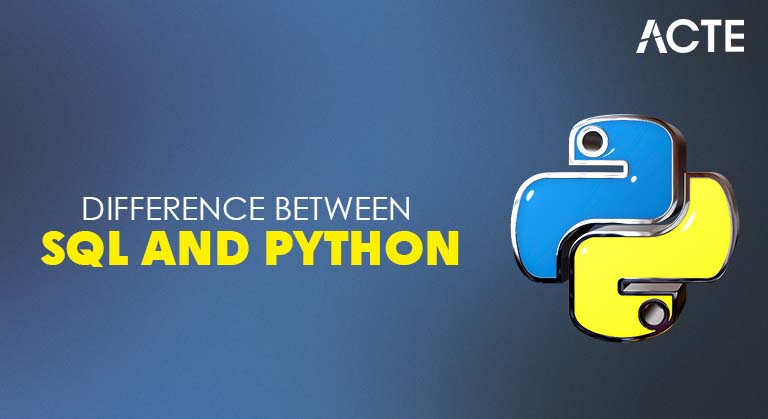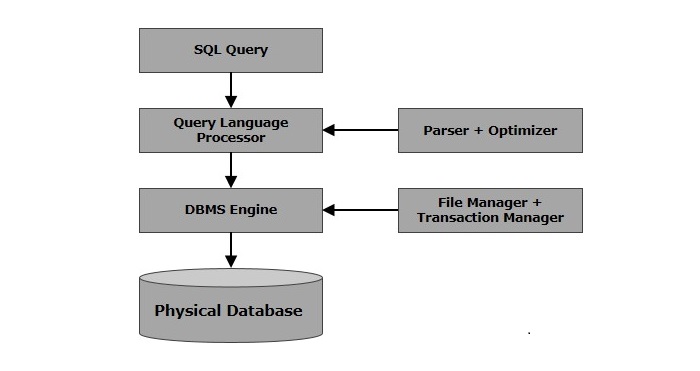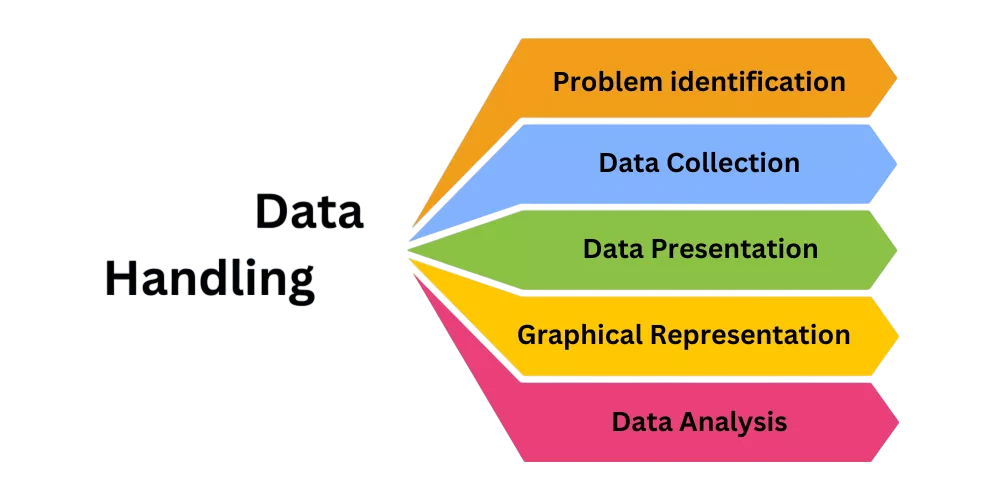
- Introduction
- What is SQL?
- What is Python?
- Core Differences Between SQL and Python
- Data Handling and Manipulation
- Use Cases: When to Use SQL vs. Python
- Integration of SQL and Python
- Performance and Scalability
- Conclusion
Introduction
SQL vs Python are two fundamental tools widely used in data management and analysis, but they serve different purposes and operate in distinct ways. SQL (Structured Query Language) is primarily designed for managing and querying structured data stored in relational Database Training. Python, on the other hand, is a versatile programming language known for its simplicity and powerful libraries that enable everything from web development to complex data analysis and machine learning. Understanding the differences between SQL and Python can help you choose the right tool for your data-related tasks and enhance your overall productivity.SQL and Python are two of the most popular tools used in the world of data, but they serve very different purposes. SQL, which stands for Structured Query Language, is a specialized language designed to manage and manipulate data stored in relational databases. It allows users to efficiently query, insert, update, and delete data organized in tables. SQL’s strength lies in its ability to handle large volumes of structured data with ease and perform complex queries using a standardized syntax. It is widely used by database administrators, data analysts, and developers for tasks related to data retrieval and reporting. Python, on the other hand, is a general-purpose programming language known for its simplicity and versatility. Beyond just data manipulation, Python supports a wide range of applications, including web development, automation, and especially data science. Python boasts powerful libraries like Pandas, NumPy, and scikit-learn that allow users to clean, analyze, and visualize data, as well as build machine learning models. While SQL excels at querying structured data within databases, Python provides greater flexibility for advanced data processing and analysis. Firebase Realtime Database Understanding the key differences between these tools helps data professionals choose the right technology for their specific needs and combine them effectively to unlock deeper insights.
Do You Want to Learn More About Database? Get Info From Our Database Online Training Today!
What is SQL?
- SQL stands for Structured Query Language.
- It is a standardized language used to manage and manipulate relational databases.
- SQL allows users to perform tasks like querying, inserting, updating, and deleting data.
- It works with structured data organized in tables with rows and columns.
- SQL is widely used in data analysis, reporting, Databases and database administration.
- Common SQL commands include SELECT, INSERT, UPDATE, DELETE, and CREATE.
- SQL helps retrieve specific data quickly using powerful querying capabilities.
- It is essential for maintaining data integrity and enforcing relationships between tables.
- Popular relational database systems that use SQL include MySQL, PostgreSQL, Oracle, and Microsoft SQL Server.

What is Python?
- Python is a high-level, general-purpose programming language.
- Known for its simple and readable syntax, making it beginner-friendly.
- Widely used in web development, automation, data analysis, machine learning, and more.
- Supports multiple programming paradigms, including procedural, object-oriented, and functional programming.
- Offers a vast ecosystem of libraries and frameworks such as Pandas, NumPy, Django, Advantage with NoSQL Database and TensorFlow.
- Python can handle various data types and formats, from structured to unstructured data.
- Ideal for data manipulation, visualization, and complex computational tasks.
- Cross-platform compatible, running on Windows, macOS, Linux, and other systems.
- Strong community support and extensive documentation make it easy to learn and troubleshoot.
- SQL is designed specifically for managing and querying structured data in relational databases.
- Python is a general-purpose programming language used for a wide range of applications beyond data handling.
- SQL operates primarily on structured data organized in tables with rows and columns.
- Python can handle Oracle Database Certification structured, semi-structured, and unstructured data using various libraries.
- SQL uses a declarative syntax focused on what data to retrieve or manipulate.
- Python uses an imperative and procedural syntax focused on how to perform tasks.
- SQL is mainly used for data retrieval, reporting, and database management.
- Python is used for data analysis, automation, machine learning, web development, and more.
- SQL queries run inside database management systems (e.g., MySQL, PostgreSQL).
- Python scripts run in general programming environments or interpreters.
- SQL can be embedded within other programming languages, including Python.
- Python can connect to databases using libraries like SQLAlchemy or pandas to execute SQL queries Cursors in SQL .
- SQL has a relatively simpler, domain-specific language with fewer commands to learn.
- Python, being a full programming language, requires understanding broader programming concepts.
- Python can connect to SQL databases using libraries like sqlite3, psycopg2, and PyMySQL.
- Libraries such as SQLAlchemy provide an Object-Relational Mapping (ORM) layer to interact with databases more intuitively.
- The pandas library allows reading SQL queries directly into DataFrames for easy data manipulation and analysis.
- Python scripts can execute SQL commands to fetch, update, or delete data within databases.
- Integration enables combining SQL’s efficient querying with Python’s advanced data processing and visualization.
- Using Python with SQL supports automated workflows, Technical SEO such as scheduled data extraction and reporting.
- This integration is common in data science, analytics, and backend development projects.
Would You Like to Know More About Database? Sign Up For Our Database Online Training Now!
Core Differences Between SQL and Python
Purpose:
Data Handling:
Syntax:
Use Cases:
Execution Environment:
Integration:
Learning Curve:
Data Handling and Manipulation
Data handling and manipulation are fundamental tasks in both SQL and Python, but they approach these tasks differently due to their distinct design and capabilities. SQL is specifically built to work with structured data stored in relational databases. It allows users to easily query, filter, aggregate, and update data using concise commands. SQL excels at handling large Database Training efficiently, performing complex joins, and ensuring data integrity through its structured schema and relational model. However, SQL’s operations are primarily limited to tabular data and predefined schemas.

Python, on the other hand, offers much greater flexibility in data handling. With powerful libraries such as Pandas and NumPy, Python can manipulate not only structured data but also semi-structured and unstructured data formats like JSON, XML, and CSV files. Python enables users to clean, transform, merge, and analyze data programmatically, providing full control over the processing logic. Additionally, Python supports advanced data manipulation techniques like statistical analysis, machine learning, and visualization, which go beyond SQL’s querying capabilities. Together, SQL and Python often complement each other: SQL efficiently extracts and organizes data from databases, while Python performs more complex data transformations and analyses outside the database environment.
To Earn Your Database Certification, Gain Insights From Leading Blockchain Experts And Advance Your Career With ACTE’s Database Online Training Today!
Use Cases: When to Use SQL vs. Python
SQL and Python each have strengths that make them ideal for different data-related tasks. SQL is best suited for managing and querying structured data within relational databases. It is the go-to tool for extracting specific information, generating reports, and performing data aggregation directly within the database. For example, if you need to retrieve sales data for a particular region or calculate monthly averages from a large dataset, SQL provides efficient, straightforward queries to accomplish this. Python shines when the data workflow requires more than just querying. It is ideal for data cleaning, complex transformations, statistical analysis, machine learning, and automation tasks. Python’s extensive libraries allow users to manipulate various data formats, visualize results, and build predictive models. For instance, data scientists use Python to preprocess raw data, Data Lakes Vs Data Warehouses create custom algorithms, and generate interactive dashboards. In many real-world scenarios, SQL and Python work best together. SQL can efficiently pull the necessary data from databases, which Python then processes further for in-depth analysis or application development. Choosing between SQL and Python depends on the task complexity, data type, and desired output, making understanding both essential for a well-rounded data skillset.
Integration of SQL and Python
Preparing for a Database Job? Have a Look at Our Blog on Database Interview Questions and Answers To Ace Your Interview!
Performance and Scalability
When it comes to performance and scalability, SQL and Python serve different roles depending on the context. SQL databases are optimized for handling large volumes of structured data efficiently, thanks to their powerful indexing, query optimization, and transaction management features. They excel at executing complex queries quickly within the database engine, making them highly performant for tasks like data retrieval, Difference Between SQL and Python aggregation, and reporting. Additionally, many modern SQL databases support scaling techniques such as replication and sharding to manage growing data and user loads. Python’s performance, however, largely depends on how it is used and the libraries employed. While Python itself is an interpreted language and can be slower for certain operations compared to compiled languages, its rich ecosystem offers tools like NumPy and Pandas that leverage optimized C code for fast data processing. Python is particularly strong in scalability when integrated with distributed computing frameworks like Apache Spark or Dask, enabling the handling of massive datasets across multiple machines. In summary, SQL shines in high-performance querying within databases, while Python offers scalable solutions for complex data manipulation, analysis, and machine learning. Combining both allows organizations to efficiently process and analyze large-scale data while maintaining flexibility.
Conclusion
SQL vs Python are both essential tools in the modern data landscape, each with its unique strengths and applications. SQL excels at managing and querying structured data within relational Database Training, providing fast and reliable access to organized information. Python, with its versatility and powerful libraries, offers extensive capabilities for data manipulation, analysis, and automation across a variety of data types. Understanding when and how to use each language, or how to combine them effectively, Integration of SQL and Python empowers data professionals to tackle a wide range of challenges from simple data retrieval to advanced analytics and machine learning. By leveraging the strengths of both SQL and Python, individuals and organizations can unlock deeper insights and build more efficient, scalable data solutions.


